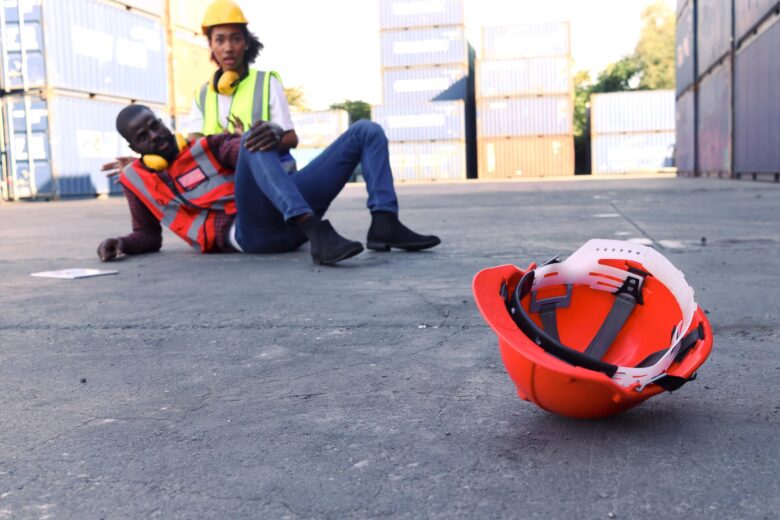
Written by Maurice Davis
Personal injury accidents, like car crashes, slip-and-falls, or even pedestrian accidents, not only create injuries you have to recover physically from, but you also have financial damages you need to recover from as well. You can be compensated for the damages and injuries caused by another negligent party, like a driver or a corporation, but the money you secure in a lawsuit or settlement may be reduced if they argue that you share fault for your accident. The concept of comparative negligence can affect your injury claim, especially if you do not have the evidence or assistance of a Detroit personal injury attorney to dispute their arguments.
Don’t let comparative negligence keep you from getting the full settlement you deserve. Call Davis Injury Lawyers to get help with your Michigan personal injury case: 313-462-7979.
How Does Michigan Define Comparative Negligence?
Michigan uses a modified comparative negligence system. That means an injured person can recover damages even if they are partly at fault, but the award is reduced by their percentage of fault. Under Michigan law, if a plaintiff’s share of fault is greater than the aggregate fault of all other parties, non-economic damages are barred and economic damages are reduced by the plaintiff’s percentage of fault. Basically, you can recover damages so long as your portion of fault more than half of the cause of your accident, but any award is lowered by your share of blame.
In practical terms:
- If your percentage of fault is 50 percent or less, you can recover, but your recovery will be reduced in direct proportion to that percentage.
- If your percentage of fault is more than 50 percent, you will generally be barred from recovering non-economic damages and economic damages may be reduced under the statute.
This rule is codified in Michigan law and plays a central role in how personal injury claims are evaluated and resolved.
How Does Comparative Negligence Affect Personal Injury Claims
Comparative negligence changes both how claims are negotiated and what juries or judges ultimately award. Insurance companies frequently raise a plaintiff’s percentage of fault to lower settlement offers. Because every percentage point matters, even small assignments of blame can cut an award substantially.
How it affects a claim:
- Settlement value. Adjusters calculate offers by estimating total damages and then subtracting the plaintiff’s fault percentage.
- Ability to sue. Under Michigan’s no-fault regime, serious injuries permit third-party suits where comparative negligence becomes crucial.
- Litigation strategy. Proving the other party’s primary fault or undermining the credibility of fault allegations can be the difference between a fair settlement and a severely reduced recovery.
Car Accident Claims & Comparative Negligence
Car crashes are a common area where shared fault arises. Typical examples include failure to yield, speed, improper lane changes, running red lights, and distracted driving. Even in cases that seem straightforward, insurers may try to allocate some blame to you.
Example calculations done step by step:
- Total damages: $100,000.
- If you are found 25 percent at fault, compute 100000 times 0.25 equals 25,000. Subtract 25,000 from 100,000 to get 75,000. Your recovery would be $75,000.
- If you are found 55 percent at fault, that exceeds 50 percent and you would generally be barred from recovering non-economic damages, and economic recovery would be reduced according to the statute.
Negligence in Slip & Fall Cases
Slip and fall claims often depend on the property owner’s duty to maintain safe premises and a plaintiff’s own actions. Comparative negligence can be raised if the property owner argues the injured person failed to watch where they were walking, ignored warning signs, wore inappropriate footwear, or otherwise acted carelessly.
Common slip and fall comparative fault issues:
- Warning signs and barriers. Ignoring clearly visible warnings can reduce recovery.
- Visibility and conditions. Were hazards obvious? Could a reasonable person have seen and avoided the danger?
- Footwear and conduct. Choices like flip-flops or running through a store may be pointed to as contributing causes.
To combat comparative negligence in these cases, preserve evidence: photos of the hazard, store surveillance, witness contact information, and timely medical records showing the injury’s link to the fall.
Dog Bite Cases & Comparative Negligence
Dog bite and animal attack cases may also involve shared fault. For example, the owner might claim the injured person provoked the animal, trespassed, or failed to follow an explicit warning.
Key considerations:
- Provocation claims. Was the dog provoked or was the plaintiff acting reasonably?
- Leash laws and signage. Did the owner violate leash or control laws?
- Location and expectations. Were you lawfully on the property or in a public space?
Evidence such as witness accounts, veterinary records showing the dog’s condition, and any history of the dog’s prior attacks can be used to reduce the effect of a comparative negligence claim.
Other Personal Injury Claims
Comparative negligence applies widely across personal injury practice: premises liability other than slip and fall, pedestrian accidents, bicycle crashes, and even some product liability contexts where a plaintiff’s misuse may be alleged. In each case, the defense will attempt to quantify the plaintiff’s contribution to the harm to reduce or eliminate liability.
How Do I Challenge Comparative Negligence Claims?
Challenging a claim that you were partially at fault involves gathering and presenting evidence that shifts the balance of responsibility to the other party. Practical steps include:
Preserve the scene and evidence
- Take photos immediately. Document road conditions, signage, lighting, and positions of vehicles or hazards.
- Secure surveillance or dashcam footage before it is lost.
Collect witness information
- Names, contact details, and written statements if possible.
- Get thorough medical documentation
Link your injuries to the incident with medical reports, treatment notes, and expert testimony where needed.
- Use experts when appropriate
- Accident reconstructionists, engineers, or medical experts can demonstrate causation and fault more precisely.
Challenge weak or speculative fault claims
- Focus on inconsistencies in the defense narrative, conflicts in witness accounts, or absence of evidence supporting their version of events.
Work with counsel who will negotiate and litigate
- An experienced personal injury attorney will know how to present evidence to an adjuster or jury to minimize your percentage of fault and maximize your recovery.
FAQs about Comparative Negligence
If I get a ticket, does that mean I automatically lose?
No. A ticket is evidence but not determinative. Courts and insurers consider the totality of evidence.
What if I am exactly 50 percent at fault?
If you are exactly 50 percent at fault, you may still recover but your award will be reduced by 50 percent.
Can I still recover economic losses if I am more than 50 percent at fault?
The statute may bar non-economic damages if your fault exceeds the aggregate of others, and economic damages can be reduced. The exact outcome depends on the facts and legal application in the case.
How long do I have to file a claim in Michigan?
The standard statute of limitations for personal injury is generally three years from the date of injury, with some exceptions. Acting promptly helps protect evidence and legal options.
What if the other driver is uninsured?
You may have options under uninsured or underinsured motorist coverage through your own policy. An attorney can review applicable coverages.
Why Should I Hire a Detroit Personal Injury Attorney?
Comparative negligence makes personal injury claims more complex. An attorney helps in multiple ways:
- Evidence collection and preservation. Attorneys know what to collect and how to do it effectively.
- Negotiation with insurers. Lawyers push back against aggressive strategies that over-assign fault to the injured party.
- Expert coordination. Counsel can retain reconstructionists and medical experts to strengthen your position.
- Litigation experience. If a fair settlement is not offered, your attorney can take the case to court and present your evidence to a judge or jury.
- Maximizing recovery. A lawyer ensures all damages are accounted for and calculated correctly so the fault percentage is applied fairly.
An experienced Detroit personal injury attorney provides the practical advocacy and legal strategy necessary to challenge unfair fault assignments and pursue full compensation.
Start Your Claim Today – Dial Davis Now
Comparative negligence can reduce what you recover, but it does not mean you have to accept an unjust assignment of blame. If you have been injured in Michigan and the other side is trying to pin fault on you, contact Davis Injury Lawyers for help. We will evaluate your case, gather the evidence, and fight to ensure fault is assigned fairly so you receive the compensation you deserve. Call Davis Injury Lawyers today: 313-462-7979.
